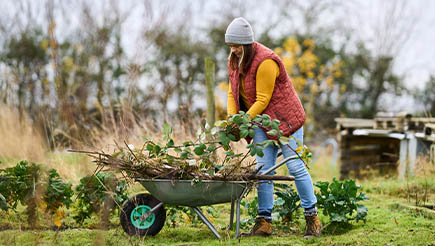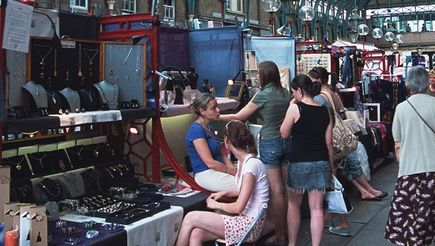Over the past couple of decades, online competitors and out-of-town retailers have stolen some of the high street's thunder.
There are likely to be more changes ahead for Britain's shop-owners, but looking to the past can offer some ideas to encourage people to return to the town centre.
From the Victorians: elaborate window displays…
The idea of the high street began during the Victorian era – more precisely in the 1860s. Market stalls transformed into bricks and mortar holdings, and shop owners made the most of this by creating enticing window displays. Big department stores such as Harvey Nichols and Selfridges continue that tradition today, but over a century ago even the smallest shops got in on the act. Showmanship was key to attracting customers, too, with butchers showing off their sausage-making skills on the street.
Today, innovative window displays won't just draw in customers, they could also result in free advertising, as passers-by share pictures of them on social media.
...and a focus on artisan products
Many of the conveniences of modern life didn't exist during the Victorian era, and everything was done by hand. For example, café owners would roast their own coffee beans and put together teabags with unique blends.
The craft revolution has made a big splash in Britain in recent years, and taking an artisan approach towards your products could entice trend-conscious shoppers through your doors. To capitalise on this fashion use simple packaging and identify the provenance of your produce, with labels indicating if they're ethically sourced, free from preservatives or made in house.
From the Edwardians: impeccable customer service
Toned-down colours, airy spaces and top-notch service marked out the Edwardian high street. Customers were treated almost like royalty, referred to as "sir" and "ma'am" and offered a place to sit down while the shop assistants fetched their purchases.
These niceties might be considered over the top by today's standards, but simply increasing the level of service can build customer loyalty and encourage them to return. Engage in some friendly chit-chat, offer to help your customers if they are struggling to carry their goods and ensure they feel good about their shopping experience.
From post-war Britain: social hub
The high street was the hub of the local community during the Forties. People would stop and gossip as they made their way from shop to shop (supermarkets didn't exist yet).
Today's small retailers can foster community interaction by hosting after-hours events for locals, such as open evenings. Offering free tea and coffee (à la Waitrose) may also entice people to linger for longer.
From the Sixties: choice and discounts
After wartime scarcity, the Sixties heralded a new golden age for the British high street. The Resale Prices Act of 1964 made it easy for retailers to buy products in bulk. This gave customers more choice than they had ever had before, at better prices.
Fast fashion remains popular today, and for small clothing retailers it's important to stay on top of (or ahead of) trends. As well as keeping up with fashion press, it's worth spending time on Instagram and Twitter to find out which trends fashion bloggers are championing.
There’s no denying the high street has transformed over the past few decades, but is it really all bad news for today’s retailers? We’ve taken a look into the past of some of the UK’s busiest high streets to find out how they’ve changed and what this means for the future, in our High Street: Then and Now series.






